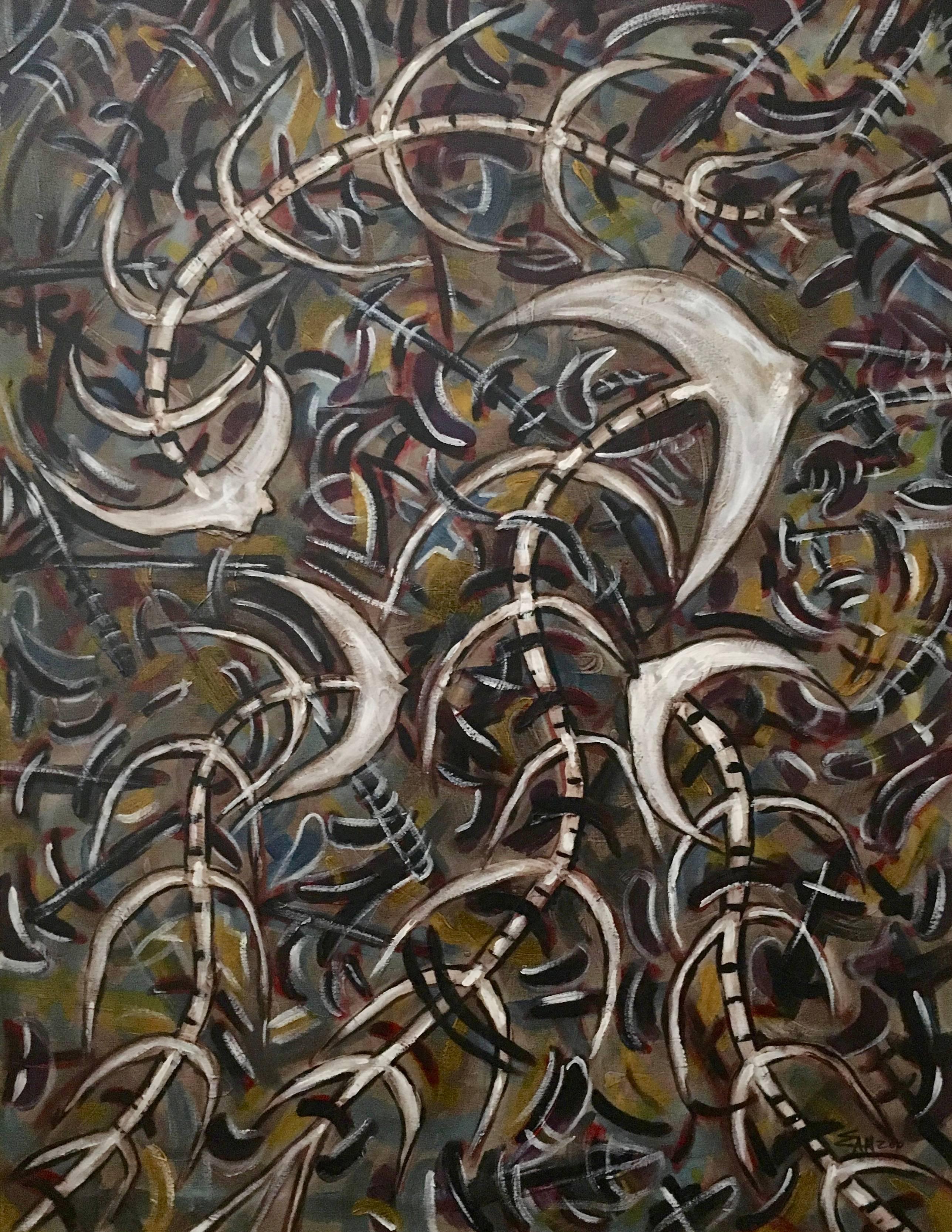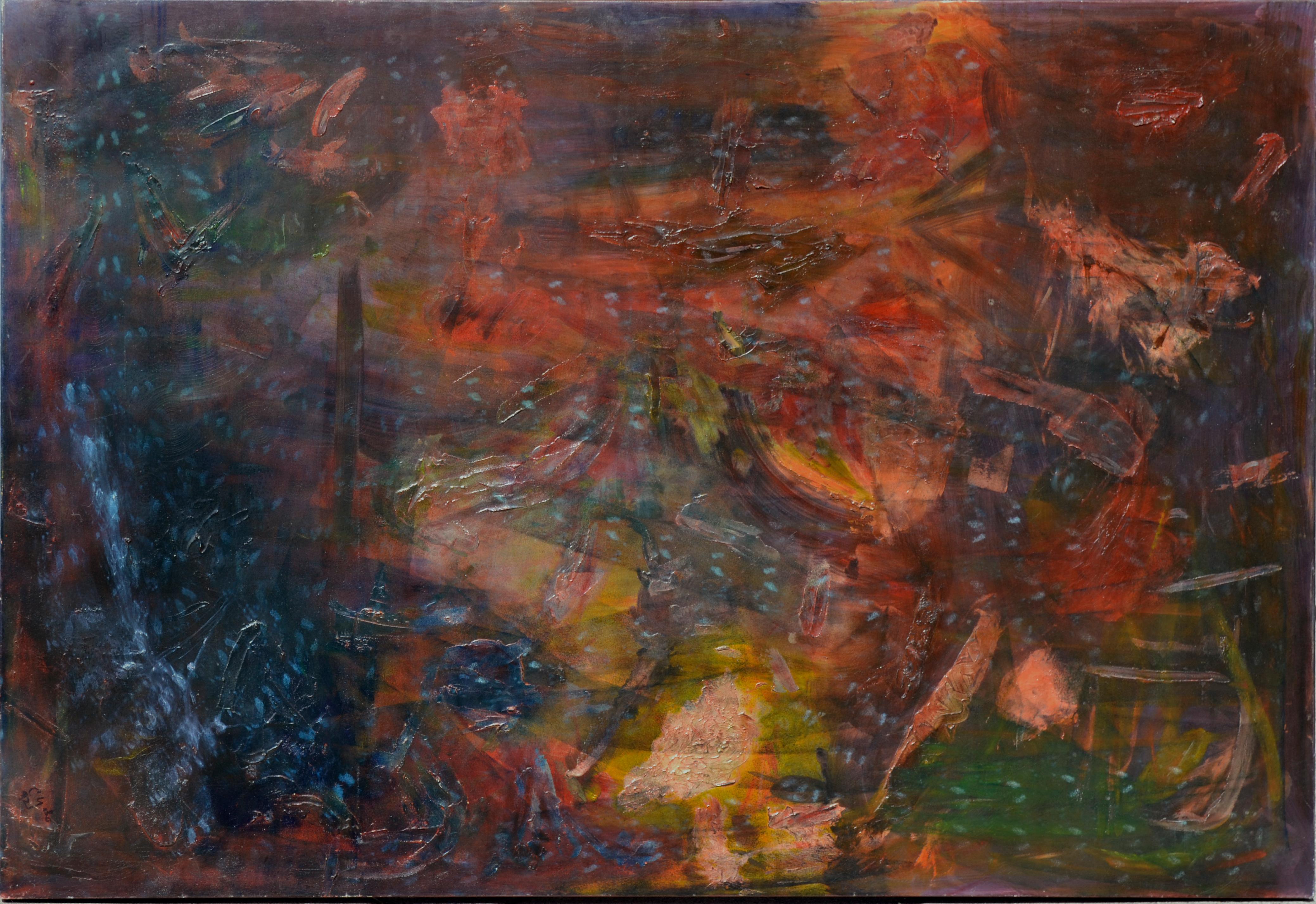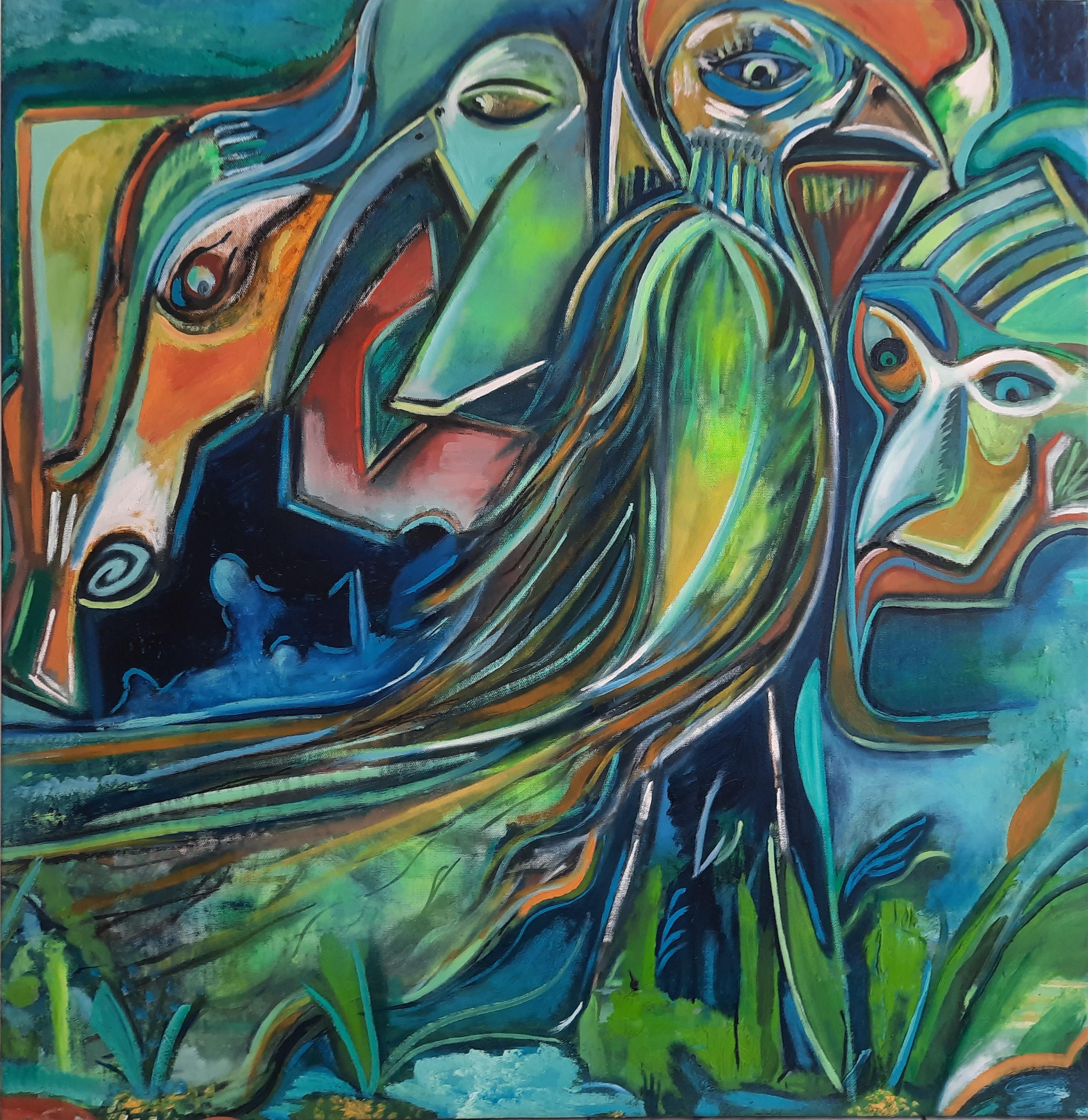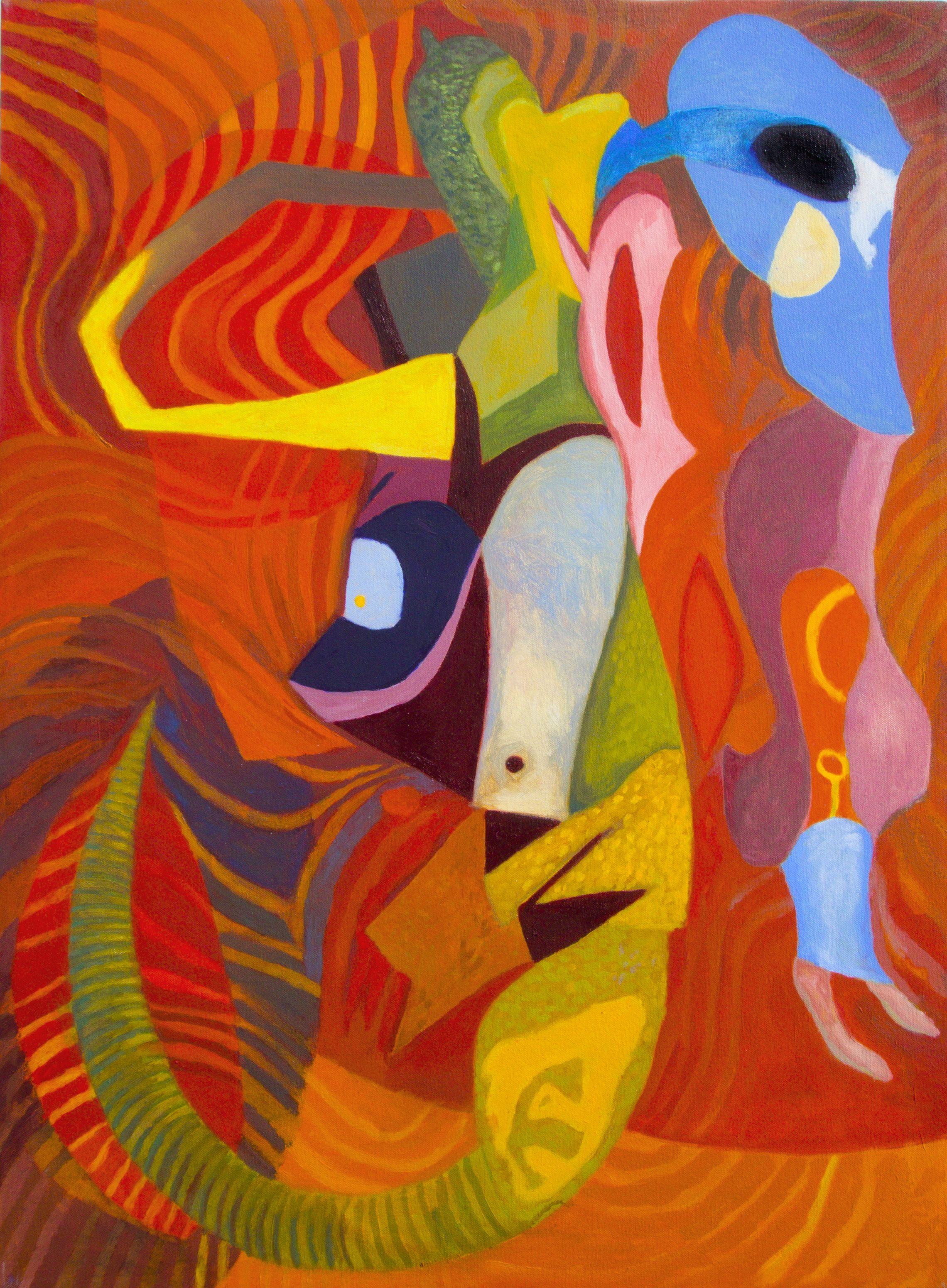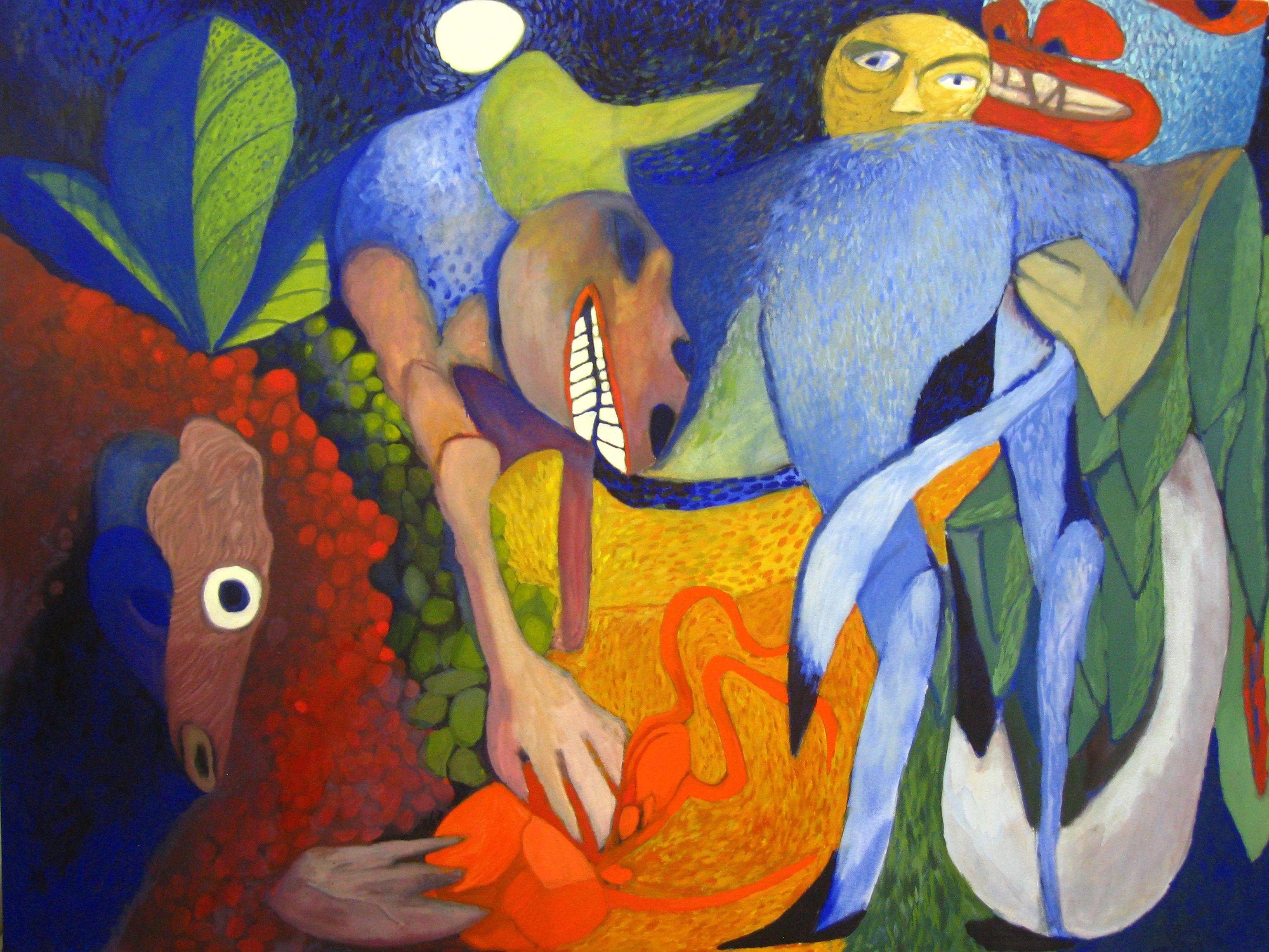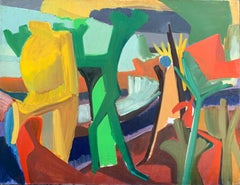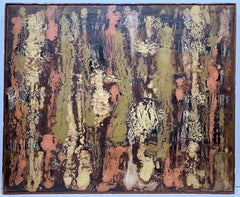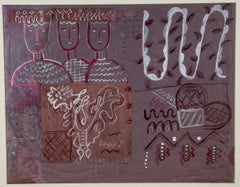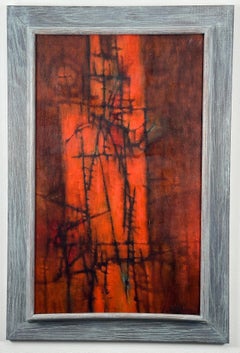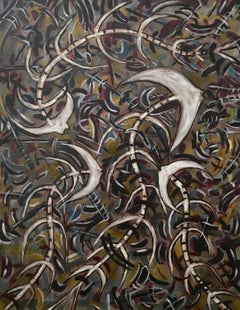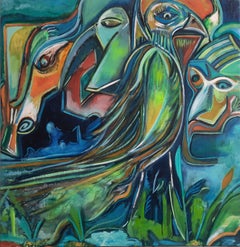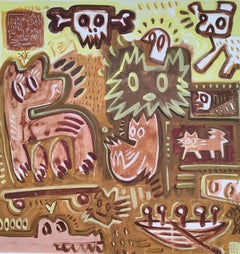Items Similar to Conjuring Spirits (Jungle Drums)
Want more images or videos?
Request additional images or videos from the seller
1 of 16
Conjuring Spirits (Jungle Drums)1942
1942
$975
$1,50035% Off
£751.03
£1,155.4335% Off
€857.58
€1,319.3635% Off
CA$1,390.86
CA$2,139.7835% Off
A$1,521.34
A$2,340.5235% Off
CHF 798.36
CHF 1,228.2535% Off
MX$18,194.38
MX$27,991.3535% Off
NOK 10,075.28
NOK 15,500.4335% Off
SEK 9,399.02
SEK 14,460.0335% Off
DKK 6,404.58
DKK 9,853.2035% Off
About the Item
Dynamic jungle drummer scene by unknown NYC American artist. Oil on canvas measuring 20 x 26 inches. Signed "T 42" in ink on verso. Anco stretchers and Grumbacher NYC store stamp consistent with 1942 dating.
In need of a light cleaning. One small are of canvas loss along lower right side as depicted in detail photo.
Given the geographical location of production, date, style and compositional strategies, we strongly believe the work to be by the hand of a former Thomas Hart Benton pupil.
- Creation Year:1942
- Dimensions:Height: 26 in (66.04 cm)Width: 20 in (50.8 cm)Depth: 0.5 in (1.27 cm)
- Medium:
- Movement & Style:
- Circle Of:Thomas Hart Benton (1889-1975, American)
- Period:
- Condition:
- Gallery Location:Wilton Manors, FL
- Reference Number:1stDibs: LU245214051452
About the Seller
4.9
Platinum Seller
Premium sellers with a 4.7+ rating and 24-hour response times
Established in 2007
1stDibs seller since 2015
436 sales on 1stDibs
Typical response time: 4 hours
- ShippingRetrieving quote...Shipping from: Wilton Manors, FL
- Return Policy
More From This Seller
View AllAbstract Figurative Expressionist painting
Located in Wilton Manors, FL
Amazing Figurative Expressionism painting with exceptional color and movement. Oil on canvas, ca. 1960s. Measures 40 x 52 inches. Unsigned and unattributed. Excellent condition.
Category
Mid-20th Century Expressionist Abstract Paintings
Materials
Oil
$975 Sale Price
35% Off
Abstract Expressionist mi-century modern painting
Located in Wilton Manors, FL
Beautiful mid-century Abstract Expressionist color field painting. Oil on canvas, 16 x 20 inches; 16.5 x 20.5 inches in simple vintage wood strip frame original to the piece. Signed ...
Category
Mid-20th Century Abstract Expressionist Abstract Paintings
Materials
Canvas, Oil
$780 Sale Price
35% Off
Abstract Mexican Era Composition
By Eve Peri
Located in Wilton Manors, FL
Beautiful 1945 painting by American artist, Eve Peri. Watercolor on tissue paper, image measures 18 x 14 inches; 20.5 x 24.5 inches matted behind scratched plexiglass. Artwork and ma...
Category
Mid-20th Century Abstract Abstract Paintings
Materials
Watercolor
Untitled (Abstract Expressionist Painting)
By Jesse Redwin Bardin
Located in Wilton Manors, FL
Jesse Redwin Bardin (1923-1997). Untitled, ca. 1960.
Oil on canvas, 18 x 31 inches; 21.5 x 36.5 inches framed. Signed lower right.
Provenance: Private collection, Philadelphia; F...
Category
Mid-20th Century Abstract Expressionist Abstract Paintings
Materials
Canvas, Oil
Untitled Abstract Expressionist painting
By Eve Peri
Located in Wilton Manors, FL
Watercolor on paper, sheet measures 12 x 17.5 inches. Unframed.
Signed and dated lower right. Estate stamp on verso.
EVE PERI (1897-1966)
Born in Bangor, Maine, Eve Peri worked...
Category
Mid-20th Century Abstract Abstract Paintings
Materials
Watercolor, Gouache
Mid-century Abstract Expressionist painting
By Hoi Lebadang
Located in Wilton Manors, FL
Beautiful ca. 1960-70 abstract painting in the style of Vietnamese artist, Hoi Lebadang (1921-2015)
Oil on canvas measures 22 x 28 inches. Framed measurement 29.5 x 33.5 inches.
Un...
Category
Mid-20th Century Abstract Expressionist Abstract Paintings
Materials
Oil
You May Also Like
Cuban Artist Emilio Martinez Untitled Painting
By Emilio Adan Martinez
Located in Surfside, FL
Emilio Adan Martinez was born in Cienfuegos, Cuba, in 1954. In 1961 at the age of six he immigrated to Miami with his family. He earned his BFA from Florida International University ...
Category
21st Century and Contemporary Modern Abstract Paintings
Materials
Oil
Jungle Nights Abstract
Located in Soquel, CA
Color, texture, light and shadow interplay in this dark jewel tone abstract by an unknown Bay Area abstract expressionist artist (American, 20th Century). Signed indistinctly ("Cydo"...
Category
1990s Abstract Expressionist Abstract Paintings
Materials
Gesso, Canvas, Oil
$2,280 Sale Price
20% Off
The return of the psychopomp spirits Timothy Archer 21st Century painting nature
By Timothy Archer
Located in Paris, FR
Oil paint on canvas
Signed lower left
Category
2010s Contemporary Figurative Paintings
Materials
Canvas, Oil
TRIBAL STORIES, painting on canvas
By Angel Rivas
Located in CÓRDOBA, ES
The measurement is of the painting surface, the canvas has 5cm/2" of extra white border around the entire edge.
Use of acrylic paint and natural pigments.
Shipped rolled in a tube
...
Category
2010s Post-Modern Animal Paintings
Materials
Oil, Acrylic, Permanent Marker
Booglarized, Painting, Oil on Canvas
By Craig Moran
Located in Yardley, PA
A drawing of a pile of crumpled clothing inspired this painting. When it came time to create the painting, I was driven by a desire to conjure a visually challenging image from banal...
Category
2010s Abstract Abstract Paintings
Materials
Oil
Rituals, Painting, Oil on Canvas
By Craig Moran
Located in Yardley, PA
The blue-skinned beast with the big, crooked white teeth grinned crazily at nothing, passing his orange tentacled toy over to the creature sitting in the glowing red bushes. The moon...
Category
2010s Modern Paintings
Materials
Oil
More Ways To Browse
Vintage Drums
Painted Drum
Oil Painting Jungle
Hart Oil Paintings
Vintage Jungle Painting
Oil Drum
Used Oil Drums
Drum Painting
Paintings Of Houses Acrylic
Paul Landauer
Pink Heart Painting
Scenes From Vintage America
Terri Froelich
Tessa Vintage
Used Staple Art
Wabi Sabi Paintings
68 X 68 Painting
Abstract Christmas Art
